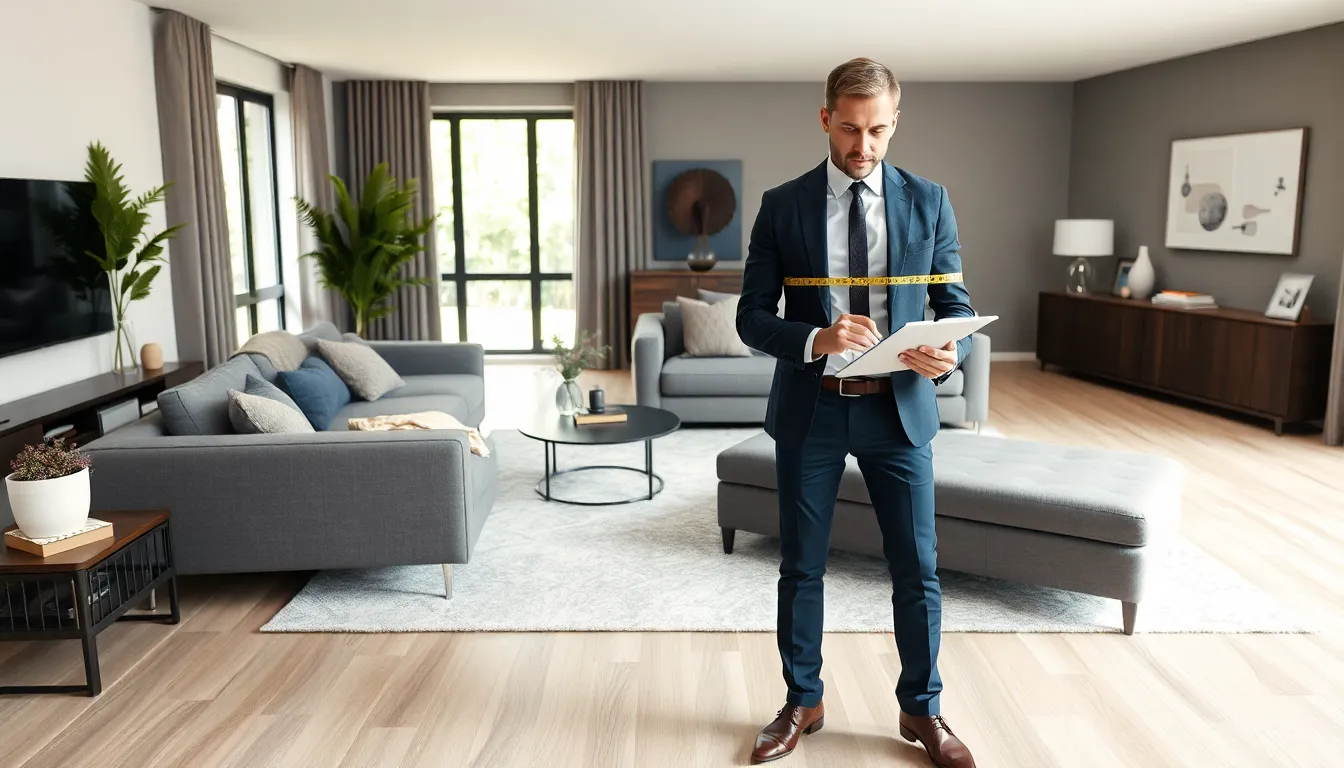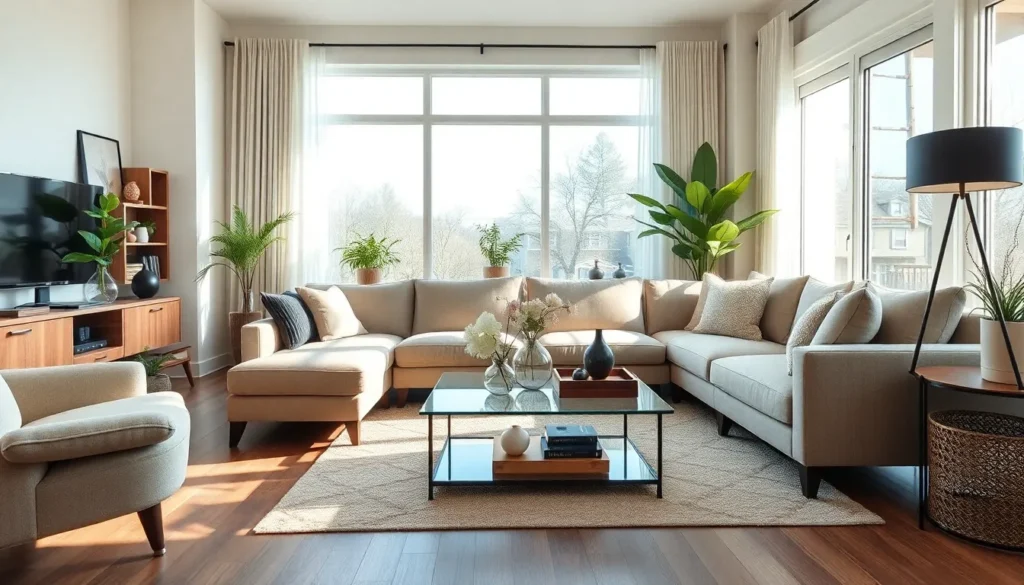Table of Contents
ToggleWhen it comes to furnishing a home, the options can sometimes feel overwhelming, like trying to find the perfect avocado in a grocery store filled with ripe and overripe options. You want the right pieces that fit not only your aesthetic but also your space, lifestyle, and budget. So, how do you avoid a decorating disaster that ends up feeling more chaotic than cozy? This guide will help you navigate the world of furniture choices, ensuring that you find the right furniture for your home, without compromising on style or functionality.
Understanding Your Space

Assessing Room Dimensions
Before diving into furniture hunting, it’s crucial to assess your room dimensions. This might seem tedious, but trust us: knowing the size of your space can save you from some serious heartache. You wouldn’t want to buy a grand sectional only to find it makes your living room feel like a cramped hotel lobby. To get started, measure the length and width of each room. Don’t forget to account for doorways, windows, and movement space. Keep a notepad handy: you’ll want those measurements when you start browsing.
Identifying Functional Needs
Next, it’s essential to identify your functional needs. How does the room serve you? Is it a home office, a cozy reading nook, or a lively gathering space? Each of these functions will dictate the style and type of furniture you’ll need. Think about what you want to achieve with the space before you start shopping. A multi-functional ottoman might work perfectly for a small living room, while a sturdy desk is necessary for a home office setup.
Establishing a Style Preference
Popular Furniture Styles Explained
Once you understand your space and its needs, it’s time to establish a style preference. Furniture comes in a plethora of styles, from modern and minimalist to rustic chic and traditional. Are you drawn to the clean lines of contemporary designs, or do you prefer the warmth of farmhouse aesthetics? Explore different styles to discover what resonates with you. Keep in mind that you can always blend styles to create a unique look, but having a primary style will guide your choices.
Mixing and Matching Styles
Choosing the Right Materials
Mixing and matching pieces can give your space character, but it can also be tricky. One of the keys to successful style blending is choosing complementary materials. For example, if you’ve got a sleek glass and metal coffee table, you might want to balance it out with a cozy, textured fabric sofa. Natural materials like wood and stone can also help bridge diverse styles, bringing harmony to your curated collection.
Sustainability and Durability Considerations
Tips for Choosing Quality Furniture
When selecting furniture, sustainability and durability should play a significant role in your decision-making. Opt for pieces made from responsibly sourced materials to lessen your environmental footprint. Also, check the construction quality, well-crafted furniture can last a lifetime, saving you money in the long run. Look for joints and dowels rather than staples and glue, as these ensure better longevity.
Budgeting for Your Furniture Purchase
Budgeting is another critical factor to consider. Start by researching average costs for the types of furniture you want. Factor in all expenses, including delivery and assembly fees. Remember, it’s okay to splurge on some pieces that are worth the investment, but do plan for a budget that allows you to furnish your home without going into debt.
Shopping Tips for New Furniture
Online vs. In-Store Shopping
Now that you’re armed with your measurements and style preferences, it’s time for the exciting part: shopping. Both online and in-store shopping have their benefits. In-store offers the chance to see, touch, and try out pieces, while online shopping provides convenience and a broader range. If you opt for online, ensure you check return policies, customer reviews, and dimensions carefully. Alternatively, if you’re in-store, don’t be shy about asking for help. Retail associates can often provide valuable insights and recommendations.
Understanding Delivery and Assembly Services
Once you’ve made your choices, consider delivery and assembly services. Many furniture retailers offer these services, often for an additional fee. Assess whether you have the tools and skills to assemble items or if it’s worth the investment to have a professional do it. After all, there’s no shame in leaving heavy lifting to the experts, especially if it means you can focus on decorating.








